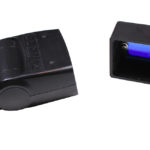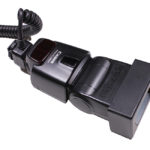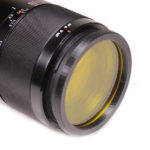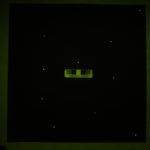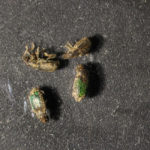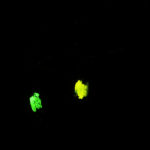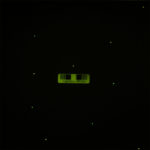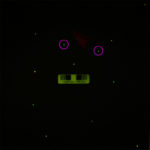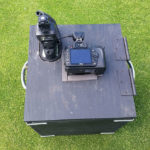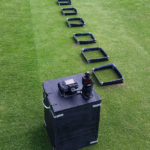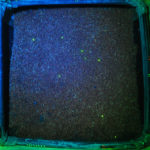Pest Management Behavior Study with Fluorescent Marking
Understanding insect behavior can be critical in developing strategies for pest management. Annual bluegrass weevils, Listronotus maculicollis, are a destructive insect that live in turfgrass and afflict golf courses in eastern North America. Control of the weevils has primarily relied on insecticides, but over time the populations are developing resistance. This elevates the importance of finding other control techniques, including mechanical removal in the course of mowing the grass. The efficacy of mowing depends on both the height of the cut (for example, fairway vs collar vs green) and the location of the weevils in the grass canopy when the mowing is done. The higher up the weevils are, the more that will be removed. If you know when that will be you can schedule your mowing for the best time.
The laboratory of Dr. Ben McGraw, Associate Professor of Turfgrass Science at Pennsylvania State University, is researching the factors (time of day, light level, temperature, etc.) that influence movement of the weevils. We met Dr. McGraw at an Entomology conference in Minneapolis in 2015. He told us how he monitored weevils with ultraviolet light and an ultraviolet marking pen, but that this method had deficiencies that limited the kinds of observations he could make. What he really wanted was a way to capture an image of the location of weevils in a defined area at any time with a method that does not impact their behavior. We have experience with fluorescence photography at a wide range of scales and were happy to work with him on improving his marking and imaging techniques.
The first thing we did was cut a piece of black cardboard and use fluorescent Sharpie® markers of several different colors to make small dots, on the order of a millimeter or less, scattered around the area. With our filters for adapting existing camera equipment for fluorescence stimulated not by ultraviolet light, but by blue light – an excitation filter for an electronic flash and a complementary barrier filter for the camera lens – we could take essentially instantaneous images of the full square and clearly see the dots, including distinguishing between the colors (images below). We sent this information to Dr. McGraw and the collaboration was under way.
(Click images for larger view)
- Custom excitation filter and electronic flash
- Custom excitation filter installed on electronic flash
- Barrier filter on camera lens
- Small fluorescent dots on black cardboard
For the next test he sent us a number of deceased (humanely, I was assured) weevils. We put a fluorescent stripe on their backs with the Sharpies under the microscope, put them on a previously marked foamcore, and repeated the photography. They could easily be seen along with the dots.
- Annual bluegrass weevils with fluorescent marking, white light
- Annual bluegrass weevils with fluorescent marking, fluorescence
- Fluorescent Sharpie dots on black cardboard
- Fluorescent Sharpie dots and marked weevils on black cardboard
Following this success Dr. McGraw acquired our accessories for his camera system and he and his student Benjamin Czyzewski designed an experiment that would take advantage of the new capability. Benjamin created a custom-built ‘dark box’ that held the camera and flash in fixed positions. A known number of weevils were released in 30.5 x 30.5 cm (12 x 12 in) enclosures. The weevils could be left undisturbed, and when it was time to collect data it was easy to quickly place the box over a square and snap a picture. Since the box excluded ambient light the photos were always taken in darkness and the same camera settings could be used throughout. The marked weevils could be seen and counted easily in the resulting images. For the main experiment a fluorescence image of each observational arena was taken on an hourly basis for an extended period, along with ambient light and temperature measurements.
- Light-excluding box holding the camera and flash
- Photography box next to the observational arenas
- Fluorescence image of marked weevils in the turf canopy
So what seems to be the dominant factor in annual bluegrass weevil movement behavior in the canopy, and when is it best to mow? Read the open access paper to find out.
Reference
Czyzewski, B. D., & McGraw, B. A. (2018). Detection of Listronotus maculicollis (Coleoptera: Curculionidae) Turfgrass Canopy Activity With the Use of a Novel Fluorescent Marking System Suggests Opportunities for Improved Mechanical Control. Environmental Entomology. doi:10.1093/ee/nvy156. Link for free access

